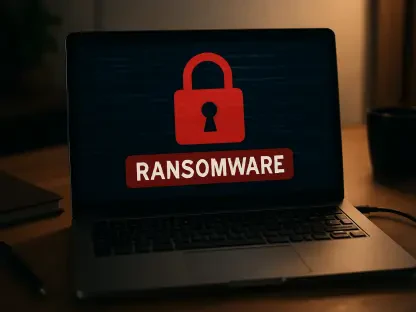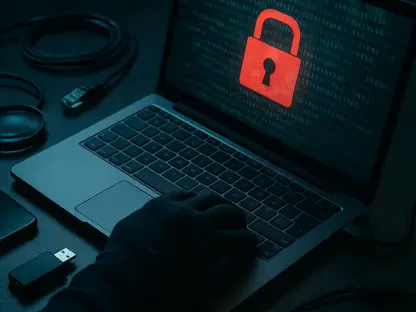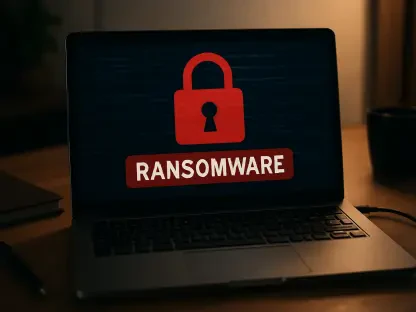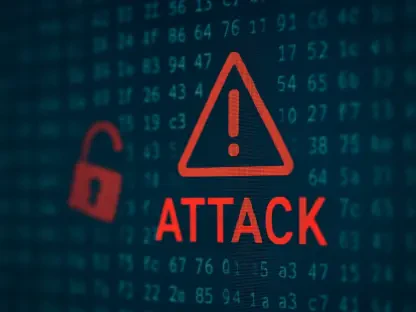In an era where containerization drives the backbone of modern software development, a staggering statistic emerges: over 80% of enterprises rely on Docker for their deployment pipelines, yet beneath this widespread adoption lies a pressing concern—security vulnerabilities that could undermine the very systems businesses depend on. This review delves into the recent critical flaws discovered in Docker Compose and Docker Desktop, dissecting their technical implications and evaluating how Docker’s responses measure up in safeguarding the ecosystem.
Overview of Docker’s Ecosystem and Importance
Docker stands as a cornerstone in containerization, offering a platform that simplifies the creation, deployment, and management of applications through lightweight containers. Core components like Docker Compose, which orchestrates multi-container environments via YAML configurations, and Docker Desktop, a user-friendly tool for local development on Windows and macOS, play pivotal roles in its ecosystem. These tools empower developers to streamline workflows, from testing to production, across diverse environments.
The significance of Docker cannot be overstated in today’s tech landscape. It underpins continuous integration and continuous deployment (CI/CD) pipelines, accelerates development cycles, and supports scalable enterprise solutions. With millions of users worldwide, its ability to abstract underlying infrastructure while ensuring consistency makes it indispensable for cloud computing and microservices architectures.
However, this widespread reliance also amplifies the stakes when security flaws surface. As containerization becomes integral to digital transformation, understanding and addressing vulnerabilities in Docker’s tools is paramount to maintaining trust and operational integrity in software development.
In-Depth Analysis of Recent Security Flaws
Path Traversal Issue in Docker Compose (CVE-2025-62725)
A severe path traversal vulnerability, tagged as CVE-2025-62725 with a NIST severity rating of 8.9, was uncovered in Docker Compose by Imperva researcher Ron Masas. This flaw arises from insufficient path sanitization during the handling of OCI artifact layers, a feature meant to simplify configuration sharing. Attackers could exploit this by crafting malicious annotations to break out of cache directories and write arbitrary files on host systems where Compose holds write permissions.
The implications of this vulnerability are far-reaching, particularly for environments where Compose is embedded in automated workflows like CI/CD pipelines. Such a breach could allow unauthorized modifications to critical system files, potentially leading to full system compromise. This underscores a fundamental risk in tools that process external inputs without rigorous validation.
Docker swiftly addressed this issue with a patch in version 2.40.2, urging users to update immediately. While the response was prompt, the incident highlights a critical need for stronger input normalization mechanisms to prevent similar exploits in components handling complex data structures.
DLL Hijacking Flaw in Docker Desktop (EUVD-2025-36191)
Equally concerning is the DLL hijacking vulnerability identified in Docker Desktop’s Windows Installer, labeled EUVD-2025-36191 with an ENISA severity score of 8.8. This flaw stems from an insecure DLL search order, where the installer prioritizes user-accessible locations such as the Downloads folder over secure system directories. Malicious actors could place rogue DLLs in these paths to execute code with elevated privileges.
This vulnerability poses a significant threat to Windows users, especially in corporate settings where Docker Desktop is used for local development. An exploit could grant attackers deep access to host systems, compromising sensitive data and disrupting development environments. The ease of exploitation, given the commonality of user-writable directories, amplifies the urgency of addressing this issue.
Docker responded by releasing version 4.49.0, which corrects the search order, alongside updated system requirements for future releases mandating at least Windows 10 22## or Windows 11 23##. This mitigation, while effective, raises questions about prior oversight in installer design and the need for preemptive security audits in user-facing tools.
Broader Security Trends in Containerization Tools
Recent vulnerabilities in Docker products reveal a troubling pattern of high-severity flaws emerging in quick succession. This marks the second consecutive month of critical issues for Docker Desktop, following another significant flaw earlier in the year. Such recurrence suggests systemic challenges in balancing the rapid evolution of features with robust security frameworks in containerization platforms.
The growing complexity of these tools exacerbates the problem, as developers integrate advanced functionalities like OCI artifact support without fully anticipating security ramifications. Cybersecurity experts, alongside organizations like NIST and ENISA, consistently emphasize the severity of these lapses, pointing to high ratings as evidence of potential impact. Their consensus stresses the importance of stringent design practices to curb exploitable weaknesses.
Beyond individual flaws, these incidents reflect a broader industry struggle to secure automation-driven environments. As containerization tools become more intricate, the attack surface expands, necessitating a shift toward proactive security measures over reactive patches to maintain resilience against evolving threats.
Real-World Impact on Industries
The ramifications of Docker’s vulnerabilities extend deep into sectors heavily reliant on containerization, such as software development, cloud services, and enterprise IT. A path traversal flaw in Compose could disrupt CI/CD pipelines by allowing attackers to manipulate build processes, potentially injecting malicious code into production systems. This threatens not only operational continuity but also the integrity of deployed applications.
Similarly, the DLL hijacking issue in Docker Desktop endangers individual developers and organizations using Windows environments. A successful exploit could lead to unauthorized system access, exposing proprietary code or customer data to theft or sabotage. Such breaches could severely damage trust in development tools critical to daily operations.
Beyond immediate risks, these vulnerabilities could have a chilling effect on confidence in automated processes. If left unaddressed, they might deter adoption of containerization technologies or push companies to seek alternatives, highlighting the urgency for Docker to reinforce its security posture to sustain industry reliance.
Mitigation Efforts and Ongoing Challenges
Securing Docker’s ecosystem presents both technical and operational hurdles, primarily due to the inherent tension between feature richness and strict security boundaries. Tools like Compose and Desktop are designed for flexibility and ease of use, often at the expense of tight controls over user inputs or system interactions. This creates persistent vulnerabilities that are difficult to eliminate without compromising functionality.
Docker’s mitigation strategies have been decisive, with patched versions—Compose 2.40.2 and Desktop 4.49.0—released to address the specific flaws. Additionally, clear communication about updated system requirements for Desktop demonstrates a commitment to long-term security enhancements. However, these fixes are reactive, addressing issues only after discovery rather than preventing them through design.
Adopting broader strategies aligned with OWASP guidelines could offer a more sustainable path forward. Regular system updates, continuous monitoring for anomalous behavior, and embedding secure-by-design principles into development cycles are essential to fortify Docker tools against future threats, though implementing these consistently across diverse user bases remains a daunting task.
Looking Ahead: Docker Security Prospects
The future of Docker security hinges on addressing foundational weaknesses, such as inadequate path sanitization and insecure search policies, through architectural overhauls. Enhancing validation mechanisms for data inputs in Compose and enforcing strict DLL loading protocols in Desktop could significantly reduce exploit opportunities. Such improvements would require a cultural shift toward prioritizing security in feature development.
Community vigilance and contributions from security researchers, as exemplified by Imperva’s findings, will remain crucial in identifying and resolving threats. Proactive patching, supported by transparent communication from Docker, can help maintain user trust while addressing issues swiftly. Collaboration between developers and security experts is vital for staying ahead of sophisticated attack vectors.
Over the long term, these vulnerabilities may influence perceptions of Docker within the containerization industry. Sustained focus on cybersecurity, including regular audits and user education, will be necessary to reinforce its position as a leader, ensuring that innovation does not come at the cost of reliability or safety.
Final Reflections
Looking back, this review of Docker’s recent security challenges revealed critical flaws in Compose and Desktop that exposed significant risks to users worldwide. The path traversal and DLL hijacking issues underscored persistent gaps in securing complex containerization tools. Docker’s timely patches provided necessary relief, yet they also highlighted the reactive nature of current defenses.
Moving forward, users must prioritize immediate updates to the latest versions to safeguard their systems. Beyond individual action, Docker should invest in preemptive security measures, integrating robust validation and design checks into its development pipeline. Additionally, fostering a stronger partnership with the security research community could help anticipate threats before they manifest.
As containerization continues to shape technology landscapes from 2025 onward, ensuring the integrity of tools like Docker will be paramount. Exploring automated security testing and stricter access controls offers a promising avenue to prevent future lapses, paving the way for a more secure and dependable ecosystem for all stakeholders.









